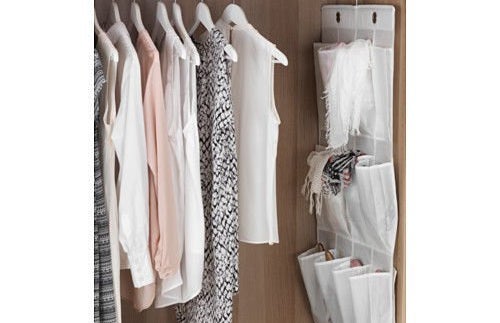With the rise of fast fashion and an unwavering consumer-driven culture, we often find ourselves indulging in unsustainable behaviour. It’s incredibly common for people, particularly teenagers and young adults, to accumulate cheap and easily accessible clothing to keep up with the unabating demands of the fashion industry. With a significant impact on the planet, these practices require a long-term solution; one of which seems to have presented itself through a steady emergence of sustainable fashion.
Capsule wardrobes, a particularly innovative example, offer a seemingly simple solution to all our problems. First coined in the 1970s, this concept is based on a minimalist approach to personal style and sustainable shopping habits. It offers a versatile range of clothing that is unique to an individual’s preferences, with an emphasis on efficiency. By investing in versatile pieces, we can reduce both our long-term costs and the time we spend picking out outfits.
As simplistic as this seems, capsule wardrobes require a lot of self-knowledge, patience and trial and error. It is definitely a long journey, but once you reach the destination, the results are quite fulfilling. With that being said, the million-dollar question is, “How do I get started on a capsule wardrobe?”
To facilitate this process, I’ve divided it up into three different phases. So, for anyone interested in creating their own capsule wardrobe from scratch, I would suggest the following steps as a general guideline:
Phase one: Decluttering
- Begin by identifying and listing your favourite articles of clothing. This can be an old comfy hoodie or a dress you save for date nights. Whatever the case, it’s important to see what you’re starting out with.
- Go through this list, and mark down the approximate number of times each item is worn on a monthly basis.
- Cut out anything that is worn less than 4 times a month. Be sure to separate formalwear from this list because they are inherently worn less.
- The final pieces you cut out, as well as the ones that didn’t make the initial list of favourites, can be donated, sold or thrown away. Whatever the case, they are no longer a part of your life. Thank you, next!
Phase two: Brainstorming
- Make a new list of your remaining articles of clothing.
- Based on the foundational pieces listed below, add anything you don’t have and may need to your list:
- Jacket/outerwear: a good, everyday jacket for winter is essential.
- Leather jacket: an oversized leather jacket is perfect for transition weathers or to quickly spruce up an outfit.
- White and black tees: basic layering pieces for winter and standalones for summer.
- Button up/blouses: a few neutral toned button ups or blouses are key when going from casual to formal.
- Pants: a neutral, good quality denim can be used for any occasion, depending on what you pair it with.
- Formal wear: a basic black or beige blazer and dress pants can go a long way when reused with the pieces above. One set can easily create multiple outfits.
- Shoes: consider shoes for the different seasons and occasions. Depending on your location, the same pair of running shoes may serve as casual footwear all year round.
Phase three: Implementation
- Buy what’s on the final list from phase two as long as it’s within your budget and fulfills the following criteria:
- Will this serve me for the duration of a season or the entire year? Is this an investment piece that I can use over the years?
- Can it be styled in more than one way, with more than one article of clothing?
- Does this match the overall aesthetic and color scheme of my wardrobe?
- If something is out of your budget, consider waiting for a sale or until you’ve saved up enough money.
- Don’t be discouraged and remember that phase three can be a long-term process!
Remember to have fun with this process and take these guidelines with a grain of salt. Everyone is unique and based on our individual preferences, we may consider different factors when designing our wardrobe. A capsule wardrobe is meant to make your life easier and efficient, while also helping reduce the negative effects of fast fashion and consumerism. When the final product is ready, you will have a minimalist wardrobe of cute, no hassle and sustainable outfits!


